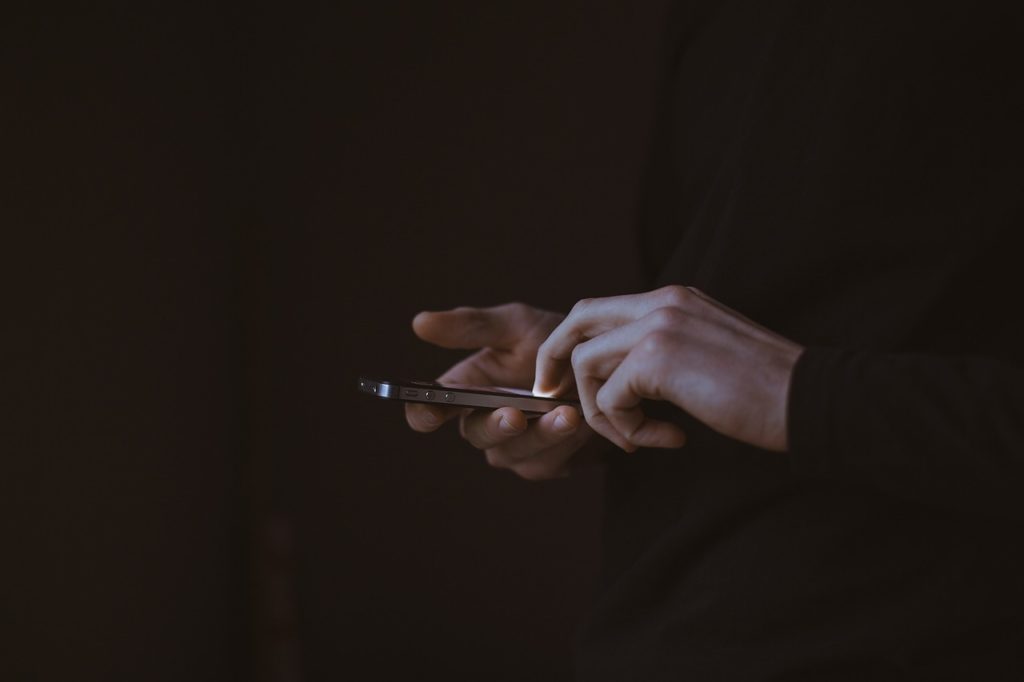If you find that your thumbs, hands, or wrists are sore after a day of smartphone use, you’re not alone. According to the National Center for Biotechnology Information, as well as the anecdotal evidence of countless doctors, musculoskeletal disorders and repetitive stress injuries associated with the prolonged, repetitive use of smartphones and other handheld devices are on the rise.
It’s not difficult to see why. When you use a smartphone, there is a whole range of complex motions going on underneath your skin: muscles are contracting, tendons are colliding, and your thumbs are continually flexing and extending as they move over the surface of the screen. Furthermore, our thumbs are usually the go-to digits for texting and typing, even though they are less dexterous than the other fingers and are particularly vulnerable to changes in the overall position of your hand. On top of that, smartphones are being used more than ever despite not being ergonomically designed for long periods of repetitive use, so it’s not surprising that growing numbers of people are experiencing so-called “texting thumb” or “text claw.”
But while this affliction is certainly something you should take steps to deal with, you don’t need to worry that you’re on the road to tendonitis or arthritis just yet. Some physicians are quick to point out that the discomfort we feel from using our smartphones is not that different from the “writer’s cramp” that people experienced a generation ago from holding a pen all day (or from any other sort of fine-motor activity). But like any sort of repetitive strain injury, it’s really best to avoid risking it if possible.
Fortunately, the treatment for texting thumb couldn’t be simpler: take a break. Giving your muscles and tendons a chance to rest occasionally helps to relieve strain and prevents the hands, wrists, and forearms from becoming stiff and cramped. Read on to learn more tips and strategies you can use to reduce flare-ups of texting thumb.
Take frequent breaks.
The most important thing you can do to prevent repetitive stress injuries from smartphone use is to take breaks at regular intervals. Remember that the key word associated with these afflictions is “repetitive,” so anything you do to break up a repetitive action will be beneficial. You should always stop and take a rest if you feel your hand start to cramp up or get sore, but it’s even better to be proactive and make sure you’re scheduling consistent breaks throughout the day.

Stretch during breaks.
To help your muscles and tendons relax even more during your break, doing a few simple stretches can make all the difference. Try making a tight fist with your fingers and thumb curled firmly together, then straighten your fingers as far as you comfortably can. Next, open your palm so that your fingers are fully extended and together, then spread your fingers apart as far as is comfortable. Next, with your hand and fingers loose and relaxed, touch your thumb to each fingertip in turn, beginning with the index finger and finishing with the little finger. Finally, to give your wrist a good stretch, hold your arm in front of you with the elbow extended, the wrist flexed, and the fingers pointing up, and pull gently back on the fingers with your other hand.
Apply heat (or cold).
If you experience discomfort or pain from smartphone use that doesn’t go away quickly, even after breaks and stretching, it can help to apply a hot towel or hot pad to the affected area. This helps relax the muscles even more and can make stretching more effective. If you experience sharp or acute pain, however, you’ll want to apply an ice pack to the area to reduce any swelling. And always remember that if you’re experiencing chronic pain, it’s a good idea to consult with your doctor to make sure there’s no other underlying problem.
Change your typing position.
If you always hold your phone in the exact same position when you use it, try switching things up. For example, if you usually hold your phone in one hand and type with the other, try switching which hand does the holding and which does the typing (this is good work for your brain, too!). Or try placing your phone on a desk or table and typing with your index fingers—positions in which the phone is at rest can be less straining than positions where you have to hold the phone.

Get a case with a good grip.
Speaking of holding your phone, investing in a good rubber case that you can hold securely but lightly can also be helpful in reducing cramping and stiffness. If your phone goes in a case, you might be tempted to clutch it more tightly to make sure you don’t drop it, but this causes your muscles and tendons to work even harder than they need to.
Go hands-free.
Thanks to speech recognition tools and digital assistants like Siri, you don’t even need to use your hands to use your smartphone. If you want to give your hands a break but need to continue using your phone, use voice-to-text features to allow yourself a complete manual rest.

